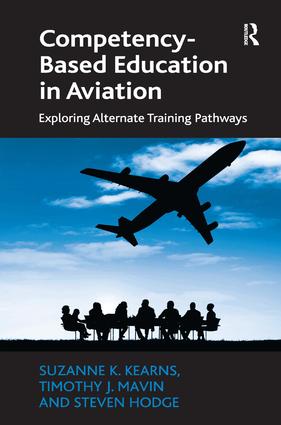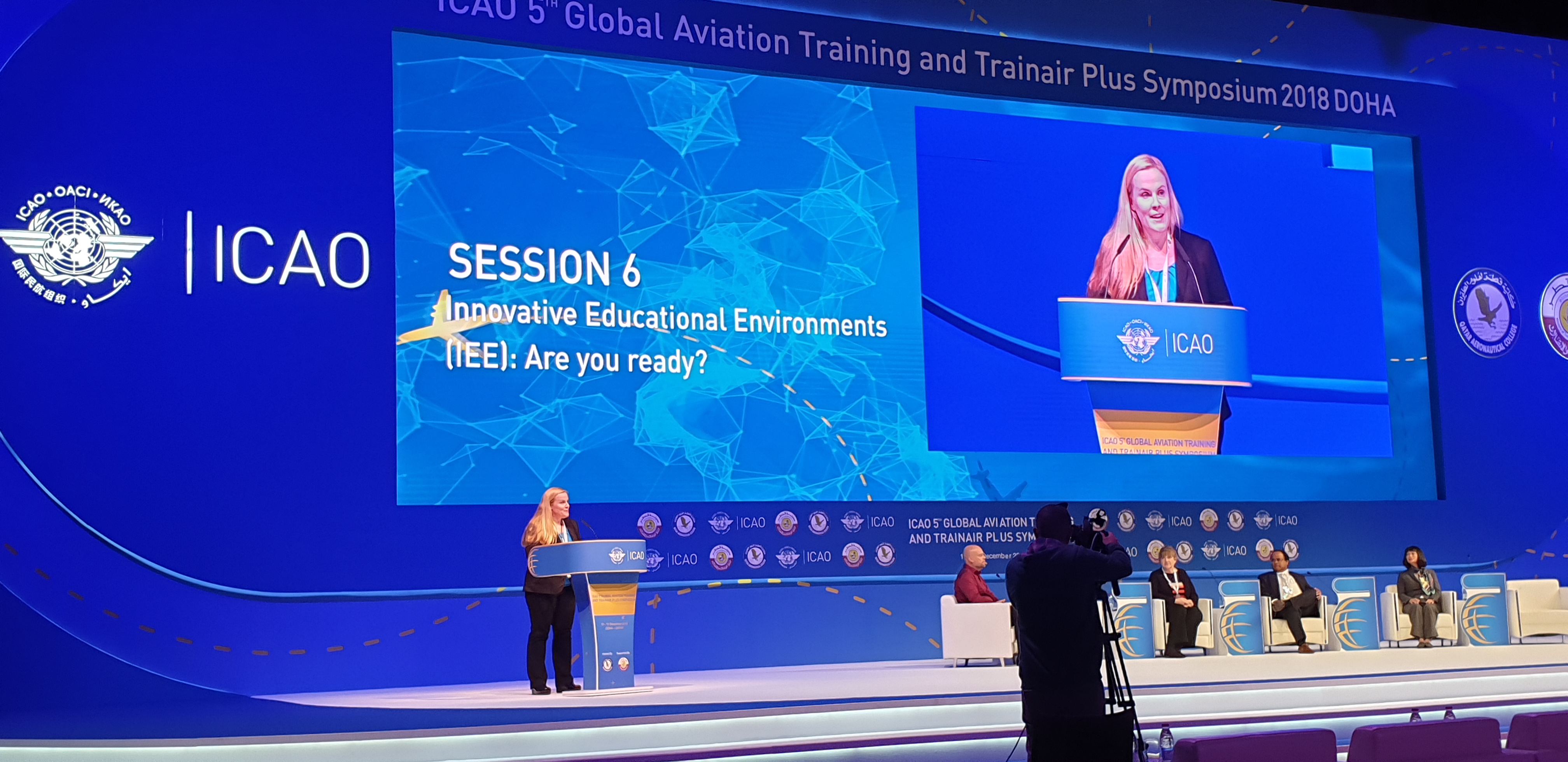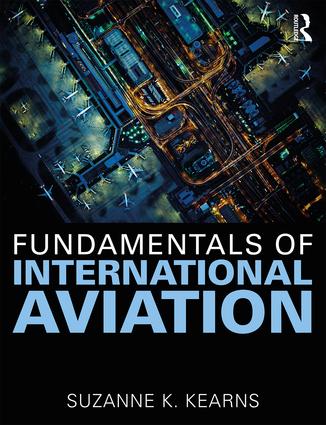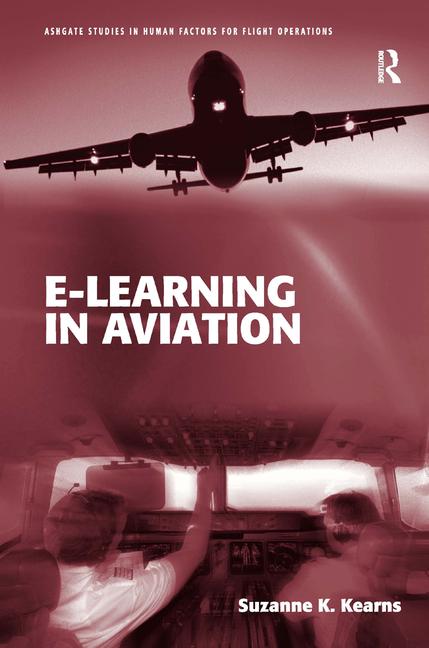
Media
#icaoNGAP - PANEL 2 - Aviation careers from the students’ perspective
(Dr. Kearns begins at 4:40) The panel will discuss aviation careers from the students’ perspective, including what are the biggest challenges, career aspirations and dreams.
Dr. Suzanne Kearns IWD 2017 Presentation
Dr. Kearns' keynote address at the Owen Sound Women's Centre charity breakfast for International Women's Day 2017.

Canada’s aviation industry faces existential headwinds—and that affects you
Macleans, August 10, 2018Online
Opinion: A pilot-training crisis is threatening to make Canada’s aviation sector unsustainable—which would lead to under-served northern communities and more cancelled flights
International aviation is a massive and complex industry that is crucial to our global economy and way of life.
Fundamentals of International Aviation, designed for the next generation of aviation professionals, flips the traditional approach to aviation education. Instead of focusing on one career in one country, it has been designed to introduce the aviation industry on a global scale with a broad view of all the interconnected professional groups. Therefore, this is an appropriate introductory book for any aviation career (including aviation regulators, maintenance engineers, pilots, flight attendants, airline managers, dispatchers, air traffic controllers, and airport managers among many others).
Each chapter of this text introduces a different cross-section of the industry, from air law to operations, security to remotely-piloted aircraft (drones). A variety of learning tools are built into each section, including case studies that describe an aviation accident related to the content of each chapter.
This book provides a foundation of aviation industry awareness that will support the next generation as they choose a career path that best aligns with their interests and ambitions. It also offers current professionals an enriched understanding of the practices and challenges between the many interconnected professional groups that make up the rich fabric of international aviation.

Competency-Based Education in Aviation: Exploring Alternate Training Pathways
by Suzanne K. Kearns, Timothy J. Mavin, Steven Hodge
Routledge
December 12, 2015
9781472438560
Whether a trainee is studying air traffic control, piloting, maintenance engineering, or cabin crew, they must complete a set number of training 'hours' before being licensed or certified. The aviation industry is moving away from an hours-based to a competency-based training system. Within this approach, training is complete when a learner can demonstrate competent performance. Training based on competency is an increasingly popular approach in aviation. It allows for an alternate means of compliance with international regulations - which can result in shorter and more efficient training programs. However there are also challenges with a competency-based approach. The definition of competency-based education can be confusing, training can be reductionist and artificially simplistic, professional interpretation of written competencies can vary between individuals, and this approach can have a high administrative and regulatory burden. Competency-Based Education in Aviation: Exploring Alternate Training Pathways explores this approach to training in great detail, considering the four aviation professional groups of air traffic control, pilots, maintenance engineers, and cabin crew. Aviation training experts were interviewed and have contributed professional insights along with personal stories and anecdotes associated with competency-based approaches in their fields. Research-based and practical strategies for the effective creation, delivery, and assessment of competency-based education are described in detail.
Whereas traditional classroom instruction requires pilots to be pulled 'off the line', a training facility to be maintained and instructors to be compensated, e-learning is extremely cost-effective and therefore an attractive alternative. However, e-learning only saves money if the training is effective. Eager to reap financial benefits, e-learning courses have a history of varying dramatically in quality. The poorest courses are those that directly convert classroom-based presentations to an online format, not recognizing that computer-based instruction is an entirely different medium. Addressing this issue directly, e-Learning in Aviation explores the characteristics of computer-based course design and multimedia that are associated with improved learning. It then provides guidance regarding how to use research-based instructional design principles to plan, design, develop, and implement an e-Learning course within an aviation organization and continually evaluate whether or not the course is accomplishing instructional goals. A blended learning strategy, which incorporates both face-to-face and computer-based instruction, is suggested as the most appropriate choice for the majority of aviation companies. The goal of this approach is to utilize e-Learning as a tool to reduce time at the training centre and thereby increase pilot productivity and potentially improve the quality of training. Although the examples within this book focus on pilot training, the suggestions and guidelines are applicable to all employee groups within the industry.
Biography
Dr. Suzanne Kearns is an Associate Professor of Aviation at the University of Waterloo. She began flight training in airplanes and helicopters at the age of 15, going on to earn a Bachelor Degree in Aeronautical Science, a Masters Degree in Human Factors and Systems Engineering, and a PhD in Education alongside her professional pilot licenses. She has been working as an aviation professor full-time for 15 years (since she was 24 years of age), has written 4 books on aviation topics, and is a frequently invited speaker at National and International aviation conferences.



